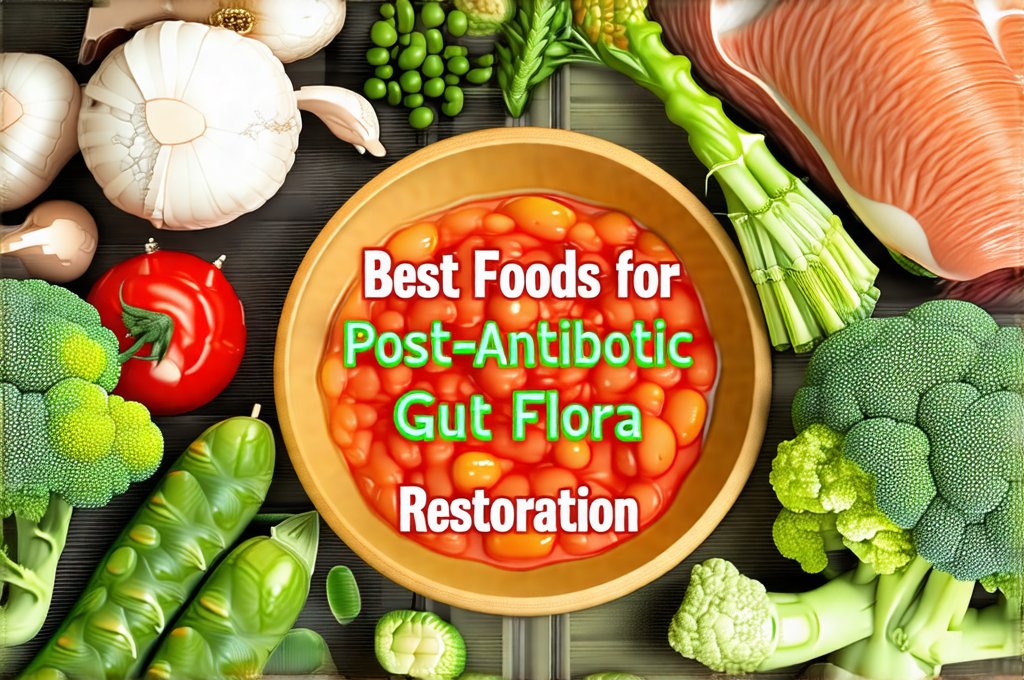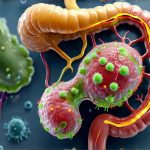Antibiotics are life-saving medications, but their use can disrupt the delicate balance of microorganisms in our gut – collectively known as the gut microbiota. This disruption, often leading to gastrointestinal distress and a weakened immune system, highlights the importance of actively restoring gut flora after antibiotic treatment. The goal isn’t necessarily to recreate the pre-antibiotic microbiome (which is incredibly complex and personal), but rather to cultivate an environment that supports beneficial bacterial growth and overall digestive health. Focusing on dietary interventions provides a powerful, natural way to support this restoration process, leveraging the power of food to rebuild a resilient gut ecosystem. For those needing specific guidance, resources like best post-antibiotic recovery protocols can be incredibly helpful.
The aftermath of antibiotic use can feel like collateral damage – while targeting harmful bacteria, antibiotics often inadvertently eliminate many of the good ones too. This imbalance can manifest in various ways, from bloating and diarrhea to fatigue and even mood changes, as our gut microbiota plays a crucial role in nutrient absorption, immune function, and mental wellbeing. A strategic dietary approach focusing on prebiotic-rich foods, probiotic sources, and easily digestible nutrients is key to repopulating the gut with beneficial bacteria and supporting its recovery. It’s about nourishing the existing good bacteria and creating an environment where new, healthy colonies can flourish. Understanding best digestive strategies is also beneficial for post-antibiotic recovery.
Dietary Foundations for Gut Restoration
A cornerstone of post-antibiotic gut restoration lies in dietary diversity and prioritizing foods that actively support microbial health. This isn’t about restrictive diets but rather a conscious shift towards incorporating more whole, unprocessed foods into your daily routine. Emphasis should be placed on fiber-rich vegetables and fruits, fermented foods, and sources of healthy fats – all of which contribute to a thriving gut microbiome. Avoiding processed foods, excessive sugar, and artificial sweeteners is equally important, as these can feed harmful bacteria and hinder the restoration process.
The key isn’t simply what you eat, but also how you eat it. Slowing down during mealtimes, chewing your food thoroughly, and practicing mindful eating all contribute to better digestion and nutrient absorption, easing the burden on a compromised gut. Hydration is paramount too; adequate water intake helps maintain the mucosal lining of the gut and supports the movement of beneficial bacteria throughout the digestive system. Remember, rebuilding gut health is a gradual process that requires consistency and patience. For individuals struggling with inflammation, exploring best practices for introducing fermented foods can be particularly helpful.
Fermented foods are particularly valuable during this phase. They naturally contain probiotics – live microorganisms that can help repopulate the gut with beneficial bacteria. Foods like yogurt (with live cultures), kefir, sauerkraut, kimchi, kombucha, and miso all offer diverse probiotic strains, contributing to a more balanced microbiome. Incorporating these into your diet regularly can provide ongoing support for gut health even after the initial restoration period. Including fermented side dishes is an easy way to boost probiotic intake.
Prebiotics: Fueling Beneficial Bacteria
Prebiotics are essentially food for probiotics – non-digestible fibers that selectively nourish beneficial bacteria in the gut, allowing them to thrive and multiply. Unlike probiotics which add bacteria, prebiotics help existing good bacteria flourish. This makes prebiotic-rich foods essential during post-antibiotic recovery. Common sources of prebiotics include:
- Onions & Garlic: Contain inulin, a powerful prebiotic fiber.
- Bananas (slightly green): Offer resistant starch, another type of prebiotic fiber.
- Oats: Provide beta-glucan, promoting the growth of Bifidobacteria.
- Apples: Rich in pectin, a soluble fiber with prebiotic properties.
- Asparagus: Contains inulin and fructooligosaccharides (FOS).
- Legumes (beans, lentils): Excellent sources of various prebiotic fibers.
Incorporating these foods into your diet doesn’t need to be complicated; simply add sliced bananas to your breakfast oatmeal, include a side of steamed asparagus with dinner, or snack on an apple throughout the day. The goal is consistent consumption rather than large quantities at once. Introducing prebiotic-rich foods gradually can help minimize digestive discomfort and allow your gut to adjust to the increased fiber intake. Consider exploring traditional fermented foods from different cultures for diverse probiotic benefits.
Supporting Gut Motility & Digestion
A healthy gut isn’t just about bacterial balance; it’s also about efficient digestion and motility (the movement of food through the digestive tract). Antibiotics can sometimes disrupt these processes, leading to constipation or diarrhea. Gentle strategies to support both are crucial. Incorporating soluble fiber from foods like oats and apples helps regulate bowel movements and promotes a sense of fullness.
Regular physical activity plays a significant role too; even gentle exercise stimulates gut motility and improves digestion. Staying adequately hydrated is also key – water softens stool and facilitates its passage through the digestive tract. Avoiding overly processed or heavy meals can reduce strain on the digestive system, allowing it to focus on restoration rather than processing difficult-to-digest foods.
Gradual Reintroduction of Foods
Following antibiotic treatment, some individuals may experience increased sensitivity to certain foods. A cautious and gradual reintroduction approach is often recommended. Begin with easily digestible foods like plain yogurt, cooked vegetables, and lean proteins. Slowly introduce new foods one at a time, observing for any signs of discomfort or digestive upset. If a food triggers symptoms, it’s best to eliminate it temporarily and try again later.
This process requires patience and self-awareness. Keeping a food diary can be helpful in identifying trigger foods and tracking your progress. Remember that individual tolerance levels vary significantly; what works well for one person may not work for another. The key is to listen to your body and adjust your diet accordingly, prioritizing comfort and minimizing digestive distress.
Long-Term Gut Health Maintenance
Restoring gut flora isn’t a one-time fix but rather an ongoing process of nurturing and maintaining a healthy microbiome. Beyond the initial post-antibiotic recovery phase, continue to prioritize dietary diversity, prebiotic-rich foods, and fermented food sources. Consider incorporating stress management techniques into your routine; chronic stress can negatively impact gut health.
Regular physical activity, adequate sleep, and mindful eating practices all contribute to long-term gut wellbeing. Limiting exposure to unnecessary antibiotics is also crucial – discuss alternatives with your healthcare provider whenever possible. A healthy gut is a cornerstone of overall health, so investing in its maintenance is an investment in your long-term vitality. Individuals with lactose sensitivities can explore fermented non-dairy options to support their gut health without discomfort.


















